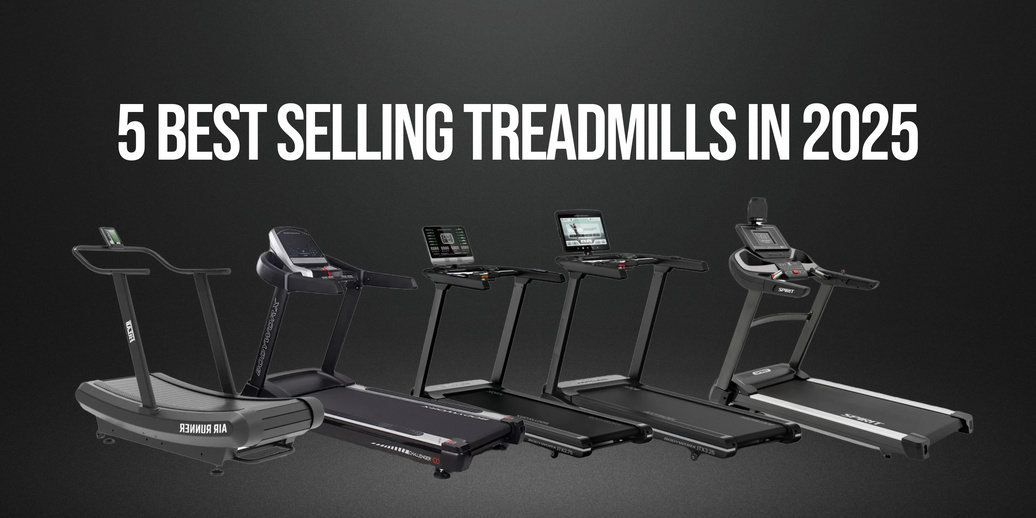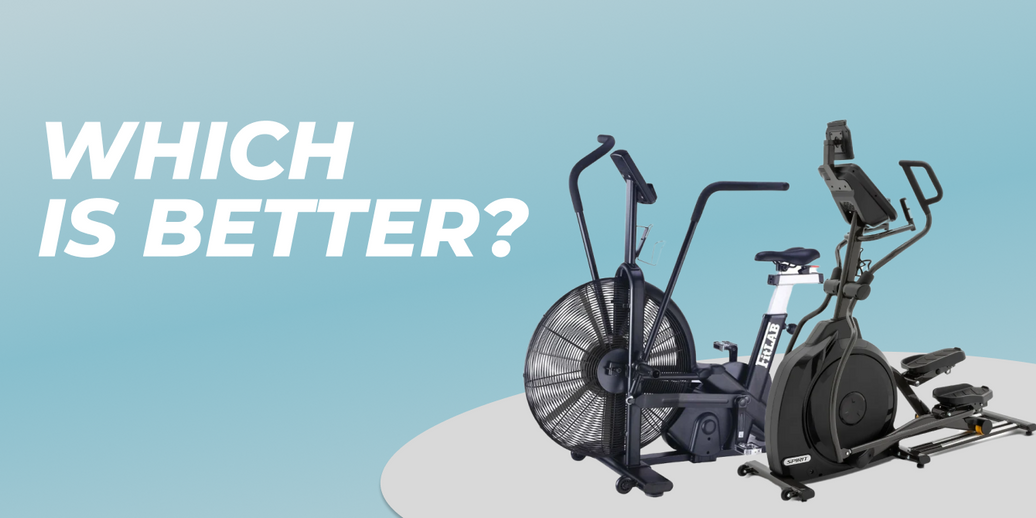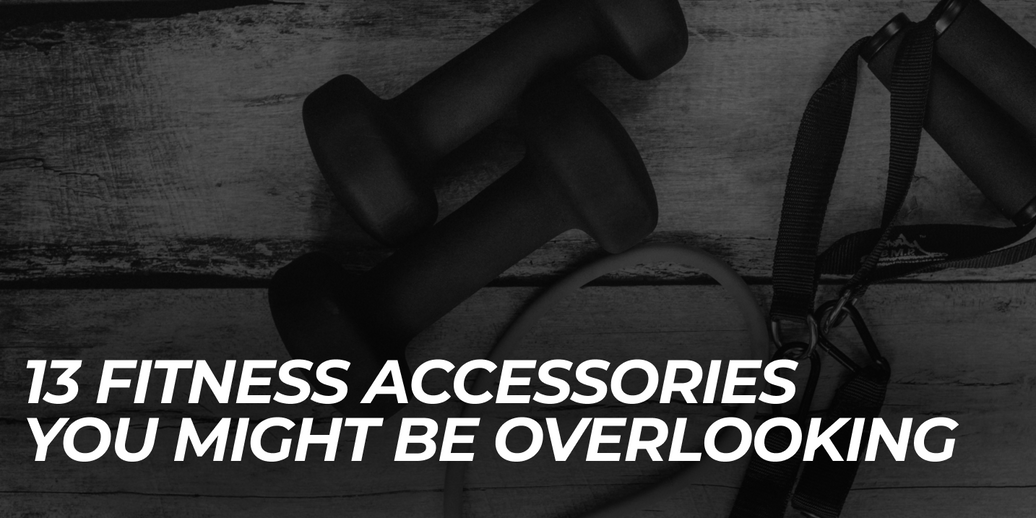Which helps better to lose weight fast?
When it comes to shedding excess weight, consistency and the right equipment can make all the difference. Two of the most popular machines you’ll find in home gyms and fitness centres across Australia are elliptical cross trainers and exercise bikes. Both are well-regarded for their cardio benefits, low joint impact, and ability to help you burn calories efficiently.
Whether you're just starting out or getting back into fitness, choosing between these two machines can feel confusing. Each has its strengths, and the best option often depends on your personal fitness goals, physical limitations, available space, and training preferences.
Ellipticals and stationary bikes have become go-to options for Australians aiming to lose fat, improve endurance, and build healthier habits — all without putting unnecessary stress on the body. But which one delivers faster weight loss results?
To make an informed choice, it’s important to understand how both machines work and how they contribute to fat burning through cardiovascular exercise. Let’s break that down.
How Cardio Helps You Burn Fat and Lose Weight
(Simple steps to get results – calorie deficit, consistent movement, and smarter training)
To lose weight, your body needs to burn more energy than it consumes. In practice, that means eating slightly less than your daily maintenance calories while staying active. Over time, this creates a calorie deficit that supports steady fat loss
Cardiovascular training — commonly known as “cardio” — is any type of movement that increases your heart rate and breathing over an extended period. It encourages your body to use energy (calories) for fuel, which is essential when your goal is to lose weight.
Here’s how it works: when you move at a moderate to vigorous pace using machines like an elliptical cross trainer or a stationary exercise bike, your body taps into stored fat and carbohydrates for energy. Over time, regular cardio sessions help reduce fat stores — especially when paired with a balanced diet and consistent workout routine.
Both ellipticals and stationary bikes are highly effective in this process. They help:
-
Burn a significant number of calories per session
-
Improve your metabolic rate
-
Boost cardiovascular endurance
-
Increase oxygen efficiency (VO₂ max)
-
Support better blood circulation
What’s more, they are both low-impact machines, meaning they put minimal strain on your joints — ideal if you’re recovering from injury or just want to train smarter.
Mix in Interval Training for Extra Fat Loss
Adding intervals—short bursts of effort with periods of rest—supercharges the effects of your calorie-burning workouts.
Meta-analyses show interval training leads to larger reductions in body fat and visceral fat compared to steady-state cardio, even over just a few weeks.
Plus, afterburn (or EPOC) effects mean your metabolism remains elevated for hours post-workout, helping you burn more overall calories daily.
Spotlight on Elliptical Cross Trainers
(Low-impact, full-body cardio for those who want results without joint strain)
An elliptical cross trainer — often called just an "elliptical machine" — lets you stride in a smooth, oval movement while pushing and pulling on handlebars. It creates resistance via a fan or flywheel and usually has built-in programmes to adjust the intensity. Essentially, it gives a walk‑or‑run workout without the impact of footstrike, making it one of the gentler cardiovascular machines around.
What sets the elliptical apart is its full-body activation. As you pedal, the glutes, quads, hamstrings, calves — and upper-body muscles when using the moveable handles — all get engaged. That dual effort helps ramp up calorie burn and encourages a more balanced tone from shoulders to legs.
It’s also kind to joints: your feet remain on the pedals throughout, removing impact from knees, hips, and ankles. This makes it a smart option if you're dealing with joint concerns or easing back into training after injury.
Fat‑Burning Effects on Ellipticals
(More calories per minute — especially when you adjust resistance or add intervals)
🔥 Faster Calorie Burn
Studies show that an elliptical workout typically burns about 15% more calories than a comparable session on a stationary bike, thanks to upper‑body involvement and more energy‑demanding movement patterns.
To put that into perspective: a 30‑minute ellipticals session for a 70 kg user could burn 270–350 kcal, while the same individual might only burn 210–250 kcal on an upright bike at a similar pace — assuming moderate intensity and resistance levels.
💡 Pros & Cons at a Glance
|
✅ Pros |
❌ Cons |
|
Full‑body workout: arms, core, glutes, quads — all at once |
Larger footprint than an exercise bike — takes up more space |
|
Gentle on joints: minimal impact even during intense workouts |
Some users find the elliptical motion awkward at first — there’s a learning curve |
|
Higher energy spending per minute compared to cycling |
Generally higher price point and bulkier to move around compared to bikes |
|
Versatile: easy to adjust resistance nd stride for intervals and steady-state cardio |
Not ideal for developing lower-leg strength or running-specific mechanics |
These advantages make the elliptical a standout choice for anyone looking to burn fat faster and more efficiently — especially if joint health, total-body tone, and flexibility in workouts are priorities.
Now Exercise Cycle Bikes!!
(Compact, leg‑focused cardio packed into a space‑saving design)
When Australians talk about exercise bikes, they usually mean one of three types:
-
Upright bikes – resemble traditional road bikes. You pedal seated, often with a similar posture and pedal motion.
-
Spin bikes – built for incline resistance and high‑speed training, ideal for HIIT‑style workouts or studio classes.
-
Recumbent bikes – feature a reclined seat and back support, perfect if you want a more comfortable ride with minimal joint stress.
These bikes focus heavily on the lower body—think quads, hamstrings, glutes and calves—and excel at building cardiovascular fitness without needing you to stand. That makes them a go‑to for people wanting to burn fat without overloading their knees or hips.
In Australia, Elite Fitness stocks a diverse ride of upright, spin and recumbent options. Their compact designs fit neatly into city apartments or home gyms, and most models come with easy resistance adjustment and durable engineering—making setup quick and exercise ride smooth.
There are three main types of exercise bikes you’ll come across:
Upright bikes — these mimic the posture and pedalling style of traditional bicycles while seated.
Spin bikes — built for high resistance and fast-paced training; perfect for intense interval sessions.
Recumbent bikes — feature a reclined seat and back support, offering greater comfort and reduced joint stress.
These machines primarily target your lower-body muscles—think quads, hamstrings, glutes, and calves—and excel at building cardiovascular fitness with minimal impact on joints. That makes them ideal for those recovering from injury or with knee or hip sensitivities.
You’ll also find Elite Fitness offers a wide range of these models in Australia, designed for ease of setup and efficiency. Not only are they space-saving, but they're also durable and user-friendly, which is perfect whether you're working out in a compact home gym or expanding your commercial fitness setup.
Weight‑Loss Potential on Bikes
(Different speeds, same result—if you’re consistent and intentional)
Calories burned on an exercise bike can vary significantly based on effort:
-
A moderate 30‑minute session for a 70 kg person typically burns around 260 kcal, according to Harvard Health estimates.
-
Crank up the intensity with a vigorous spin or HIIT session, and you’ll hit 350–416 kcal or more in the same half hour.
The takeaway? A well‑structured interval workout—alternating between hard sprint sets and recovery—can achieve fast results without extending your training time. Resistance control and position (e.g. standing vs. seated) help you adapt the workout to match your strength and cardio level.
✅ Pros
-
Space efficient and beginner‑friendly—great for gyms with limited room
-
Cost effective—especially upright and recumbent options
-
Gentle on joints—no impact or bounce through knees or ankles
❌ Cons
-
Minimal upper‑body activation—arms, chest and core get little workout
-
Fewer metabolic gains post‑exercise (afterburn effect) than full‑body machines like ellipticals
-
Might feel too familiar if you that you prefer a varied workout
Elliptical vs Bike: A Side‑by‑Side Comparison
Which machine works best depends on what you want to achieve—and how you like to train.
Which Machine Delivers Faster Fat Loss?
(When done right, both deliver — but one may edge ahead)
Both ellipticals and exercise bikes offer effective routes to fast weight loss, especially when you match your workout intensity with your fitness level and diet. That said, ellipticals often burn slightly more calories per minute—thanks to upper-body engagement alongside leg work—giving them a small advantage in total energy output when sessions are comparable in length and effort level.
On the other hand, vigorously-paced spin or HIIT bike sessions can rival or exceed this burn in shorter timeframes. Stimulating intervals—such as intense pedalling bursts followed by active recovery—can spike your metabolism and produce meaningful results even with briefer workouts.
Bottom line: for consistent full-body calorie burn, ellipticals typically lead. But if you're after short, high-intensity bursts, spin or upright bikes with interval training can deliver similar—or even better—fat-loss potential.
Recommended Frequency for Weight Loss
(Find the rhythm that keeps you improving and injury-free)
To support real fat loss while preserving muscle and keeping joint strain low, a well-rounded plan combines cardio and strength training:
-
Aim for 150–300 minutes of moderate aerobic activity per week or 75–150 minutes of vigorous cardio, spread across 3 to 5 sessions per week.
-
Incorporate 2 or more strength days weekly to maintain lean muscle — crucial for raising your resting metabolic rate.
Example weekly plan:
-
3–4 cardio sessions: Mix steady-state and high-intensity formats.
-
2 strength sessions focused on full-body compound movements.
-
Include active rest or light recovery activities on off days.
Beyond training, remember: consistency, gradual progression, and good tracking (e.g. logging reps, resistance levels, rest times) are key to progress and avoiding stagnation.
Choosing the Right Machine
(Pick the equipment that matches your lifestyle, space, and physical needs)
Here’s what to consider when deciding between an elliptical or an exercise bike:
-
Budget & space: Ellipticals tend to cost more and require more room, while upright or recumbent bikes offer compact, affordable options.
-
Joint health or mobility needs: Recumbent bikes offer comfortable, seated workouts if you need extra back or knee support. Ellipticals provide broader movement with minimal joint impact.
-
Training style and goals: Prefer full-body activation and variety? Go elliptical. Want focused lower-body cardio with adjustable resistance and space savings? A spin bike might suit you better.
-
Comfort and fit: Adjustable stride length on ellipticals and seat/handlebar fit on bikes ensures long-term comfort during repeated use.
Ultimately, choose what aligns with your fitness goals, available space, health considerations, and what you're most likely to use consistently.
Maintenance and Equipment Service
(Keep your machine performing at its best for years)
Taking care of your cardio machine ensures durability and uninterrupted performance:
-
Routine care: Dust and wipe down regularly. Lubricate moving parts as per the manufacturer’s instructions.
-
Inspect frequently: Check pedals, belts, resistance systems, seat alignment, and moving joints.
-
Know your limits: Understand the weight capacity and resistance range of your equipment to avoid overloading or wear.
At Elite Fitness Equipment, every elliptical cross trainer and exercise bike comes with service support and full warranty details. Their trained team can help with installations, repair, or regular check‑ups—especially useful for home gyms or commercial equipment in Brisbane and across Australia.
Visit Our Showrooms – Test Equipment Before You Buy
See. Try. Choose with confidence. Investing in fitness equipment? Make the right choice with expert support.
-
Test our full range in-store — from bikes to cross trainers and strength gear.
-
Get expert advice tailored to your fitness and training goals.
-
Access exclusive showroom offers only available in person.
-
Enjoy flexible payments with Afterpay, Zip Pay, and more.
-
We deliver and install anywhere in Australia.
Brendale & West End Locations – Explore Today!
Visit us at:
-
Brendale Store – 1/133 South Pine Rd, Brendale QLD 4500
Best Gym Equipment in Brendale - West End Super Store – 25 Glenelg St, South Brisbane QLD 4101
Best Fitness Equipment Store in South Brisbane













Leave a comment